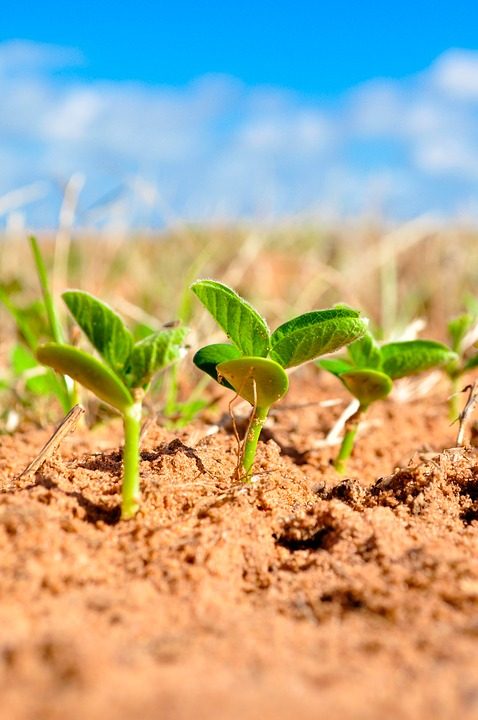Hayden Schug, Agriculture Agent | hschug@umd.edu
University of Maryland Extension, Charles County
Soybean aphids have been spotted in several fields across Southern Maryland this week, with notable activity in St. Mary’s County and Charles County. Infestations were first observed along field edges but have since been found deeper into the canopy in some locations. As you can see from the pictures, the fields look relatively healthy from the road, and it isn’t until you enter the field that you notice the large aphid populations, which is why it is important to keep scouting your fields regularly. Aphids were clustered on the undersides of leaves, along petioles, and around new growth, with many plants showing multiple colonies. In some spots, the density was high enough that honeydew, a sticky sweet substance aphids excrete, was visible creating a sheen on leaves and causing fungus to grow.
The soybean aphid is a small, yellow-green insect with black cornicles protruding from the rear of its body. Winged forms are dark with clear wings, while wingless forms are pale and slow-moving. Aphids feed by piercing plant tissue and removing sap, which can stress plants, reduce photosynthetic efficiency, and in high numbers, lead to leaf curling, yellowing, and stunting. Prolonged feeding during the reproductive stages (until R6) can lower pod set, reduce seed fill, and ultimately cause measurable yield loss. In addition to direct feeding damage, soybean aphids can transmit plant viruses, although this has not been a major yield factor in Maryland.
Scouting and Thresholds
University research across the Midwest has established an economic threshold of 250 aphids per plant, averaged across multiple sampling points, with populations actively increasing and plants still in the <R6 stages. Scouting should involve checking 20–30 plants per field, spread across several locations, including edges and interiors. The undersides of leaves and growing points are key inspection sites, as aphids prefer sheltered feeding areas.
Natural enemies, including lady beetle adults and larvae, green lacewing larvae, minute pirate bugs, and various parasitoid wasps, play an important role in regulating aphid populations. Their activity should be noted during scouting. In some cases, robust predator populations can keep aphid numbers below threshold, especially if environmental conditions are unfavorable for aphid reproduction. Rain events can also play a key role in knocking down large aphid population levels, so this must be taken into account when making management decisions.
Management Considerations
If thresholds are reached and plants are still younger than R6, an insecticide application may be warranted. Although you should also take into consideration the weather and the 1.3-2.5% yield loss from wheel tracks with applications made during R1-R5. Pyrethroid products have been the primary tool for soybean aphid control in the Mid-Atlantic, but resistance has been confirmed in parts of the upper Midwest. Although Maryland populations have not shown resistance that I am aware of, it is important to rotate insecticide modes of action where possible to delay resistance development. Follow label directions closely, including restrictions on application timing and rates, and be aware of preharvest intervals.
Hot, dry conditions can favor both aphids and spider mites. If using a pyrethroid during these conditions, monitor for mite flare-ups in the weeks following treatment. Avoid unnecessary applications to preserve beneficial insects, which are critical for season-long pest suppression.
In summary, soybean aphids are present but only a few fields show damaging levels in most Southern Maryland. Continued monitoring is key, and management should be based on established thresholds to protect yield while minimizing unnecessary insecticide use.















